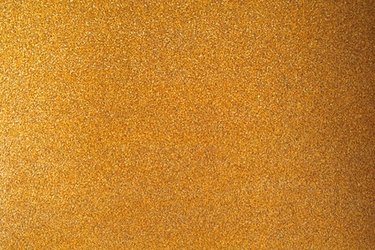Things You'll Need
Dish soap
Coarse sponge
Rags
Palm sander
220-grit sandpaper
Blue painter's tape
Heavy-duty fabric drop cloths
2- to 4-inch latex paintbrush
Acrylic latex primer
Acrylic latex paint

If you would like paint hard plastic surfaces, you must consider some important factors prior to application. Unlike wood, hard plastic is nonporous, making it unable to absorb paint adhesives. This quality will cause plastic to shed new finishes unless it is pretreated with abrasion techniques. Abrasion will create a tooth for new paint to adhere to and will help to prevent future paint failure. You should also choose a particular type of paint based on the location and function of the plastic surface.
Step 1
Wash the hard plastic with soap, using a coarse sponge. Rinse the plastic with wet rags. Wait 1-to-3 hours for the plastic to dry.
Video of the Day
Step 2
Enhance adhesion by sanding the hard plastic, prior to application. Scour the plastic with a 220-grit sandpaper until it feels slightly rough.
Step 3
Place fabric drop cloths beneath the plastic to protect the floor. Protect areas running adjacent to the hard plastic with painter's tape.
Step 4
Apply an acrylic latex primer to the abraded hard plastic, using a 2- to 4-inch latex paintbrush. Wait 2 hours for the primed plastic to dry.
Step 5
Clean the paintbrush with tap water.
Step 6
Apply an acrylic latex paint to the primed hard plastic, using the cleaned latex paintbrush. Wait 2 hours for the finished plastic to dry. Add another coat if the primer shows through.
Tip
Use an acrylic enamel instead of an acrylic latex paint if the plastic will be subjected to a large amount of duress.
Warning
Don't prime unsanded hard plastic, or the finish will fail.
Don't paint unprimed hard plastic, or the paint will peel.
Do not use an acrylic enamel on soft, malleable plastics, as it will not be able to bend along with the underlying surface.
Video of the Day